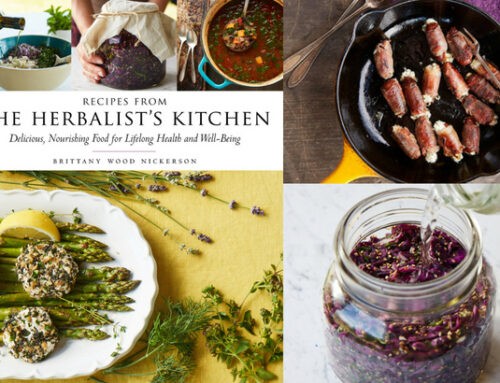Niçoise: A Cuisine And A Way Of Life
By Sarah Hodge
Updated January 5, 2015
Hillary Davis, author of “Cuisine Niçoise,” “French Comfort Food,” and “A Million A Minute,” is a food journalist, cooking instructor, and creator of the popular food blog, Marché Dimanche, in addition to being a celebrated cookbook author. Davis lived in the village of Bar-sur-Loup, near Nice, for over 11 years. Her culinary initiation into the local cuisine came from village neighbors, friends, cutting-edge chefs, and a host of characters she met along the way. In “Cuisine Niçoise,” Davis introduces us in detail to the bright Mediterranean flavors of Nice and the surrounding countryside.
Nice was part of the Kingdom of Sardinia until 1860, meaning that its culinary heritage is as much Italian as it is French. Fresh herbs, garlic, olive oil, and the freshest of seafood are prevalent here as they are throughout the entire Mediterranean region. The Italian influence is immediately apparent through polenta, pasta, pizza and risottos. Local cooking is casual, rustic, and dependent upon using the very best of local, seasonal produce. Because of this, it doesn’t have the “fuss factor” associated with haute cuisine. Another bonus of cuisine niçoise is that it is healthier and more vegetarian-friendly than “classic” French comfort food. Swiss chard gnocchi, stuffed vegetables, and ratatouille are much more than side dishes. You can craft an impressive presentation of delicious, eye-catching vegetarian main courses that everyone can enjoy.
In Cuisine Nicoise, the recipes open with a gorgeous array of home-cured olives, fresh herb cheese with honey and toast, marinated vegetables and homemade tapenade. Naturally, the venerable salade niçoise (la salada nissarda in local dialect) earns a place of honor, and Davis includes a fascinating history of its development from a simple salad of tomatoes, anchovies, and olive oil to the salad we know and love today. Other tempting salads include a late-August double fig salad with arugula, goat cheese and hazelnuts, as well as an orange, black olive, and gorgonzola salad. Soups include several raw and chilled offerings that are perfect for sweltering summer days, along with traditional pistou and heartier vegetable soups. Vegetables are given their own starring role as a Niçoise zucchini tian, Swiss chard with pears, raisins, and candied garlic, chickpea crepes stuffed with Niçoise ratatouille, and deep-fried vegetables with sage.
The section on easy weeknight suppers showcases fresh seafood (I loved the stuffed fresh sardines), one-pan chicken, egg noodles with chicken, anchovies, olives and mushrooms, honey and vermouth-roasted pork tenderloin with fig vinaigrette salad, and swiss chard omelette. Sunday suppers take a little more prep but include drool-worthy dishes like caramelized pork roast with olive jam, Tour de France zucchini pie, pistou tomato tart in a basil crust, and duck with bigarade orange sauce.
Desserts deserve special mention. In most Mediterranean countries, desserts feature fresh fruit, Here, fruit is incorporated in new and delicious presentations. A few of my favorites are the frozen fresh fig mousse with white wine caramel sauce, a tasting plate of candied orange peel, chocolate rocks, chestnut candies, peach and raspberry salad with dark chocolate sorbet, fruit and spice cakes, and several lighter-than-air confections.
The book’s oversized format allows for breathtaking panoramas of Nice and surrounding towns by photographer Steven Rothfeld. As you flip through the pages, you’ll be wowed by the bustling Cours Saleya market, beautiful architectural details, the dramatic coastline, and close-ups of market-fresh produce and beautifully plated dishes on colorful ceramics.
Part cookbook, part travelogue, “Cuisine Niçoise” will take you on a sun-splashed journey to Nice’s villages, markets, and festivals with a lively cast of characters, the most vibrant of these being Nice herself.












Bill Bradley, R.D. says:
Bill Bradley, R.D. says:
Bill Bradley, R.D. says: